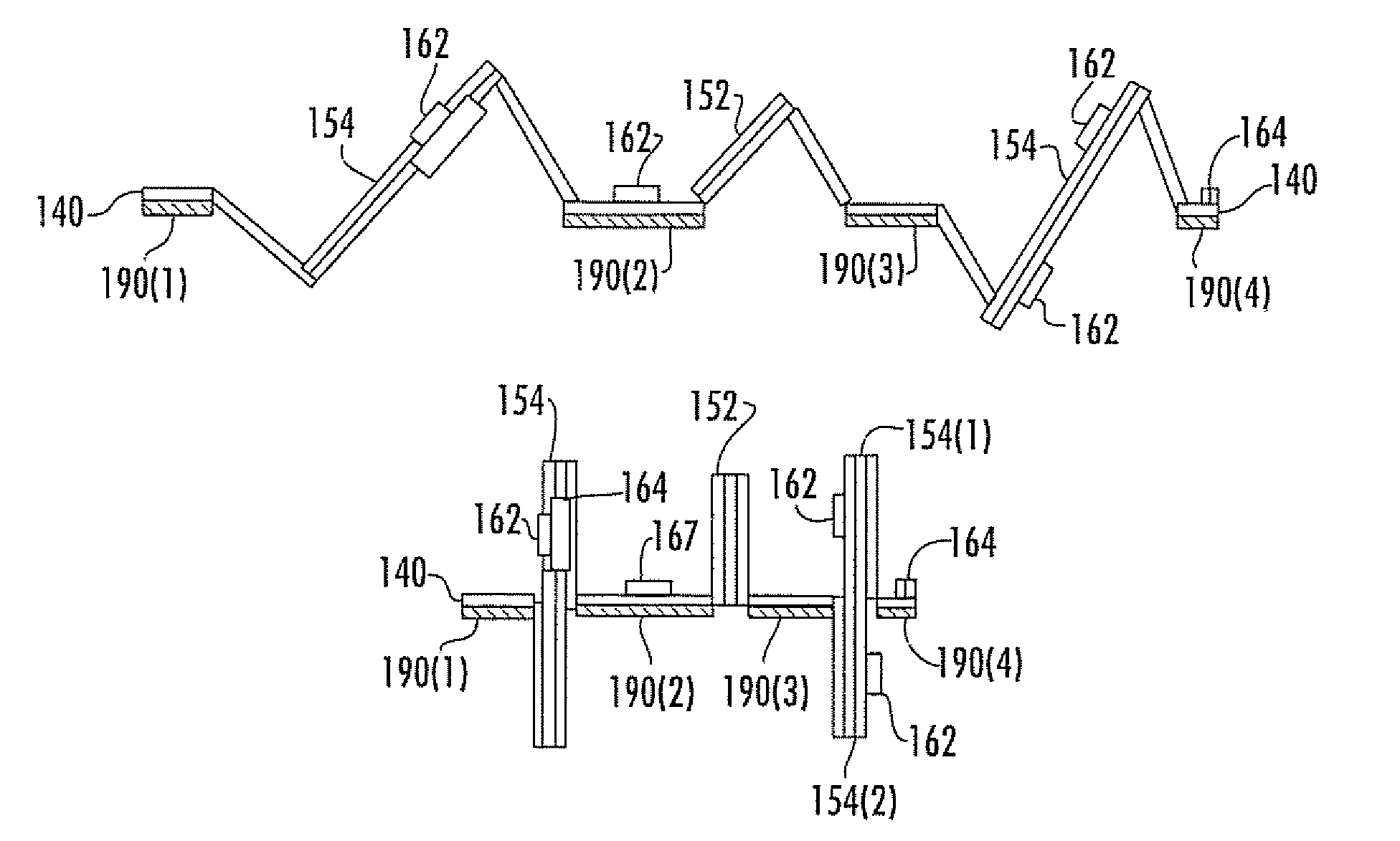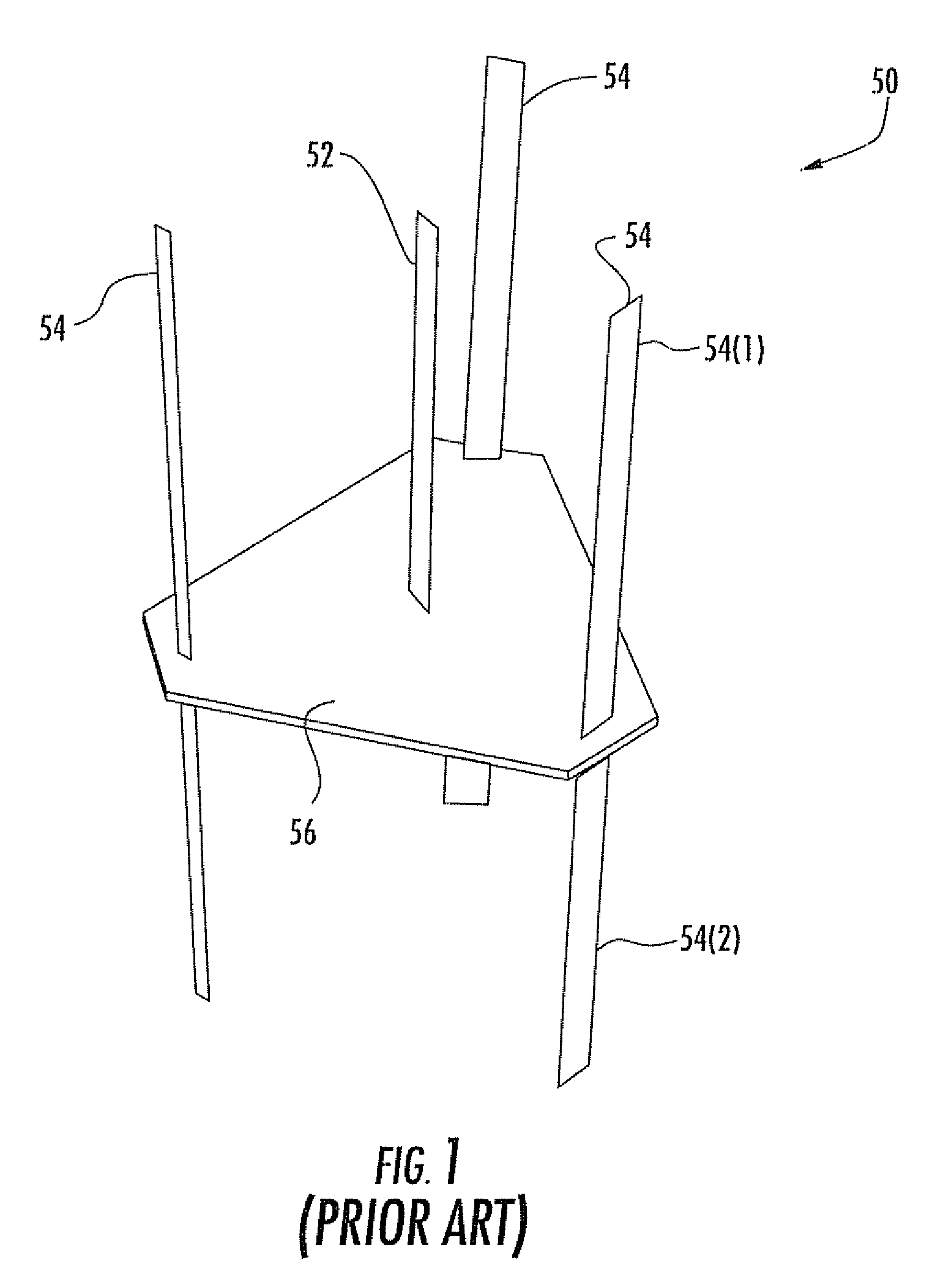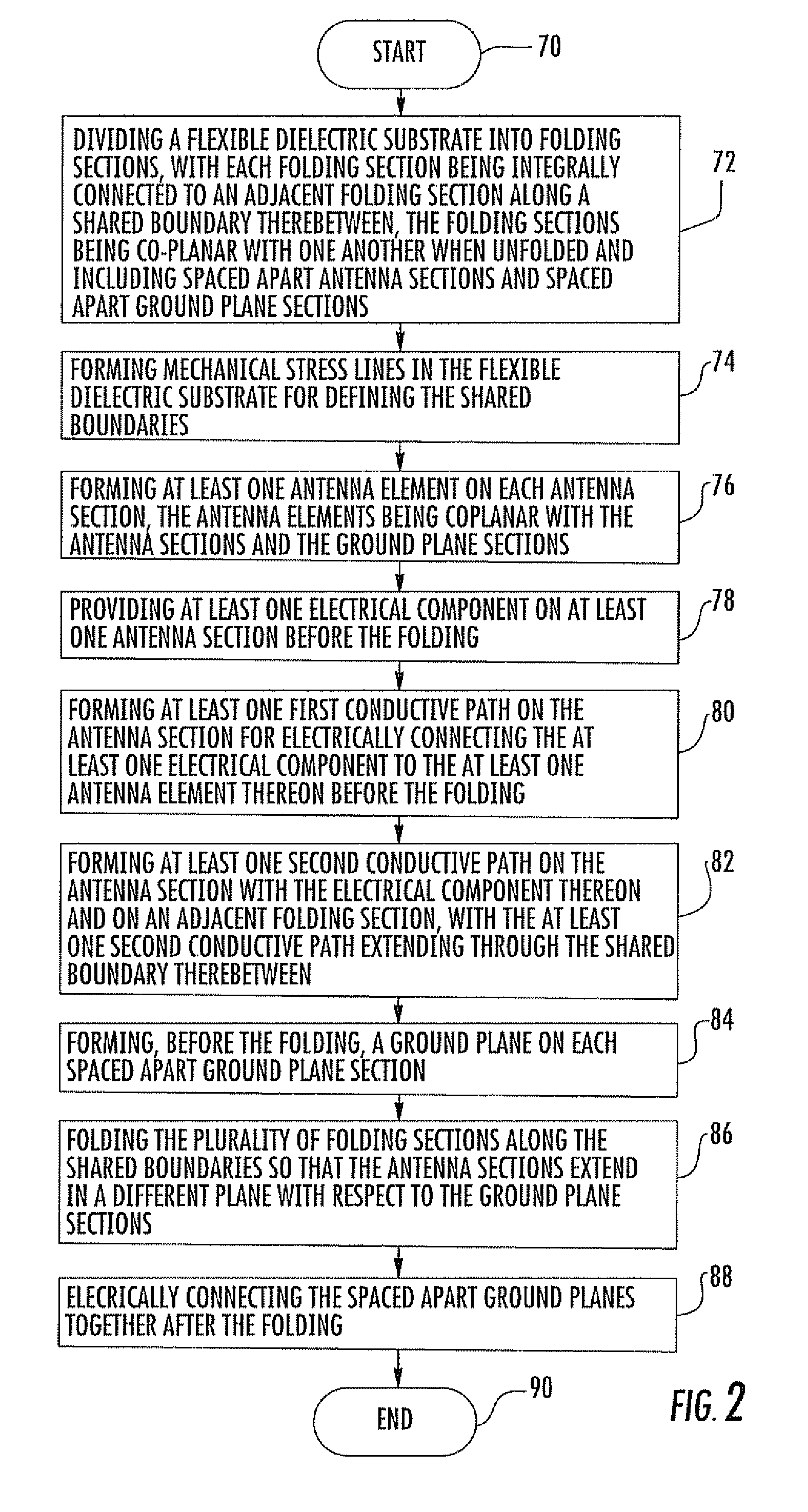Three-dimensional antenna fabrication from a two-dimensional structure
a two-dimensional structure and three-dimensional antenna technology, applied in the field of three-dimensional antenna array fabrication, can solve the problem of time-consuming and labor-intensive assembling of three-dimensional antenna array, and achieve the effect of fast and inexpensive way of fabricating and assembling
- Summary
- Abstract
- Description
- Claims
- Application Information
AI Technical Summary
Benefits of technology
Problems solved by technology
Method used
Image
Examples
Embodiment Construction
[0025]The present invention will now be described more fully hereinafter with reference to the accompanying drawings, in which preferred embodiments of the invention are shown. This invention may, however, be embodied in many different forms and should not be construed as limited to the embodiments set forth herein. Rather, these embodiments are provided so that this disclosure will be thorough and complete, and will fully convey the scope of the invention to those skilled in the art. Like numbers refer to like elements throughout, and prime notation is used to indicate similar elements in alternative embodiments.
[0026]In accordance with the present invention, the parts for a three-dimensional antenna array are initially formed as a two-dimensional structure. The two-dimensional structure is then folded into its final three-dimensional relative positions, and secured in that form. For purposes of illustrating the present invention, the antenna array 50 shown in FIG. 1 will initially...
PUM
 Login to View More
Login to View More Abstract
Description
Claims
Application Information
 Login to View More
Login to View More - R&D
- Intellectual Property
- Life Sciences
- Materials
- Tech Scout
- Unparalleled Data Quality
- Higher Quality Content
- 60% Fewer Hallucinations
Browse by: Latest US Patents, China's latest patents, Technical Efficacy Thesaurus, Application Domain, Technology Topic, Popular Technical Reports.
© 2025 PatSnap. All rights reserved.Legal|Privacy policy|Modern Slavery Act Transparency Statement|Sitemap|About US| Contact US: help@patsnap.com



